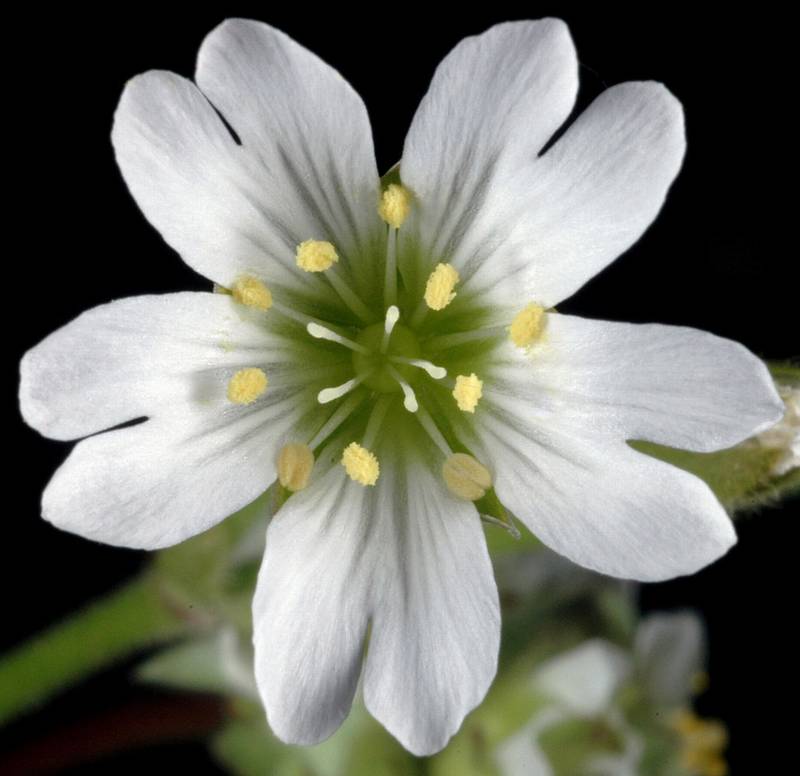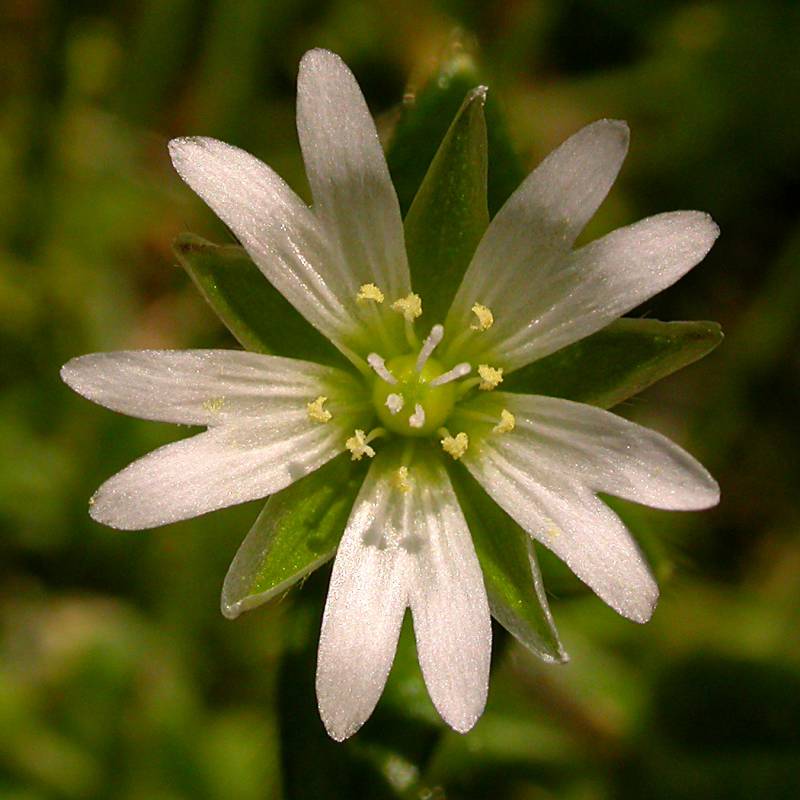Cerastium arvense
Cerastium fontanum
starry cerastium, field chickweed, field mouse-ear chickweed
common mouse-ear chickweed
Leaves opposite, linear to narrowly lanceolate, 1-nerved, 1-3 cm. long;
cauline leaves often with bundles of secondary leaves in their axils.
Leaves of the prostrate stems opposite, crowded, oblanceolate, 10-25 mm. long and 2-5 mm. broad;
leaves of the flowering stems opposite, widely spaced, up to 4 cm. long and 15 mm. broad.
Flowers 3 to 5 or more in an open inflorescence;
pedicels slender, erect, 1-3 cm. long;
sepals 5, 4-6 mm. long, with stalked glands;
petals 5, white, twice as long as the sepals, deeply bi-lobed-obcordate;
stamens 10;
styles 5.
Flowers several in an open, dichotomously branched inflorescence;
sepals 5, 4-7 mm. long, stiff-hairy;
petals 5, white, bi-lobed, equaling the sepals;
stamens 10;
styles 5.
Capsule membranous, cylindric, slightly curved, 1.5 times as long as the sepals, opening by 10 teeth.
Capsule membranous, cylindric, slightly curved, twice as long as the sepals, opening by 10 teeth.
Cerastium arvense
Cerastium fontanum
- Local floras:
BC,
OR,
WA
- Local Web sites:
Flora NW,
PNW Herbaria
WildflowerSearch
iNaturalist (observations)
USDA Plants Database
- LBJ Wildflower Center
- SEINet
- Plants of the World Online
- Encyclopedia of Life
- Wikipedia
- Google Image Search



